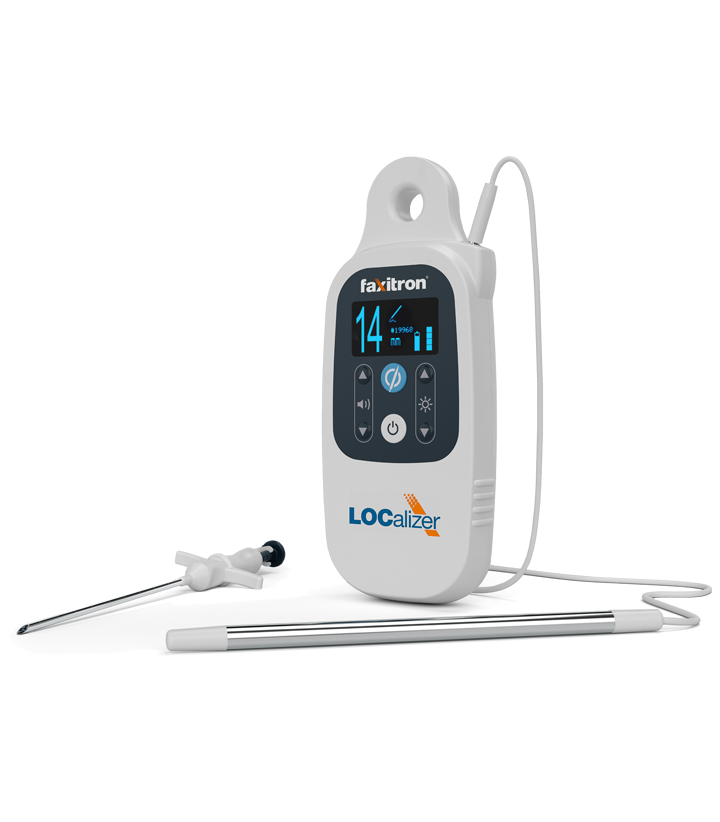Advancements in screening and diagnostic breast imaging have led to the earlier detection of breast cancer as well as an increase in the diagnosis of lesions requiring excisional biopsy. Often, the removal of these small breast lesions requires a localization device to ensure the accurate removal of the target tissue.
Traditionally, preoperative placement of a hookwire has been the primary method of breast lesion localization to guide excision. However, due to the inconveniences and inefficiencies of wire placement, there has been a recent surge in innovation in the area of breast localization.
The drawbacks of traditional wire localization
Wire localization creates numerous inconveniences for both patients and the healthcare team, predominantly due to the need to place the wire in proximity (<24 hours) to the surgery. This typically means that a patient must undergo wire placement early in the morning prior to the operative procedure, which can lead to logistical issues of coordinating schedules in the radiology suite and the operating room. A single delay can mean unexpected waiting and/or wasted operating room time, in addition to added stress for patients. Additionally, this localization method leaves an exposed wire protruding from the breast, which can cause discomfort and anxiety for the patient, while raising the risk for dislodgement of the wire or introduction of infection.
The benefits of advanced RFID localization
New fully implantable devices have an immense potential to make localization simpler, safer and more accurate. Recently granted clearance by the FDA, the LOCalizer from Faxitron uses radiofrequency identification (RFID) technology to locate non-palpable lesions intraoperatively. With LOCalizer, the radiologist can mark a target lesion with a small RFID tag that can then be detected by the surgeon with a handheld probe. Each tag has a unique identification number, enabling the surgeon to distinguish two or more tags, such as in the case of “bracketing” around a single large area or removing multiple lesions in close proximity to each other.

(Image credit: Faxitron)
An audible tone provides non-visual guidance to help pinpoint the precise location of the tag, and the handheld reader clearly displays the distance to the tag in millimeters. This has the potential for great improvements in cosmesis in that lesions can be more easily and dependably tracked from remote incisions.
Our experience with LOCalizer at Harbor-UCLA Medical Center allowed us to see how this technology could streamline the process of localization by allowing placement of the localization tag days or weeks prior to the operative procedure and still enabling accurate detection of the target lesion. Furthermore, patients may experience significantly less waiting time and can avoid the anxiety of having to undergo an additional invasive procedure on the day of their operation.
Newer breast lesion localization technologies, such as LOCalizer, aim to improve multidisciplinary collaboration and workflow, and to bring more precision and ease of use to lumpectomy and surgical biopsy procedures, while also improving cosmetic outcomes and patient satisfaction.
The bigger picture of improved localization
Selecting and implementing the appropriate breast lesion localization system can have many beneficial downstream effects for the healthcare team and the patient. We all strive to improve logistical planning, optimize patient experience, and maximize the ease and accuracy in locating non-palpable breast lesions. Utilizing a next-generation localization device such as the LOCalizer allows for a more patient-centric approach, paving the way for improved care coordination and patient outcomes, without compromising accuracy.
Christine Dauphine, MD, is an academic surgeon affiliated with Harbor-UCLA Medical Center in Torrance, California. She specializes in breast surgery and is one of the first surgeons to pioneer the use of Faxitron Bioptics, LLC’s new LOCalizer radiofrequency identification (RFID) breast lesion localization system.
Donogh O’Driscoll is responsible for all financial reporting and operational functions at Faxitron Bioptics, LLC. He graduated from the University of Limerick with a BBS, Bachelor of Business Studies with a major in Accounting and Finance. Following this, Donogh joined KPMG and assisted a wide variety of corporate clients across numerous industries in delivering high-quality audit services focused on accounting policies, internal controls, and financial reporting issues under IFRS and GAAP frameworks. In addition, he has extensive experience of working in highly regulated environments such as those of Sarbanes & Oxley and FDA regulation. He is a member of the Institute of Chartered Accountants of Ireland and joined the management team in 2008.




